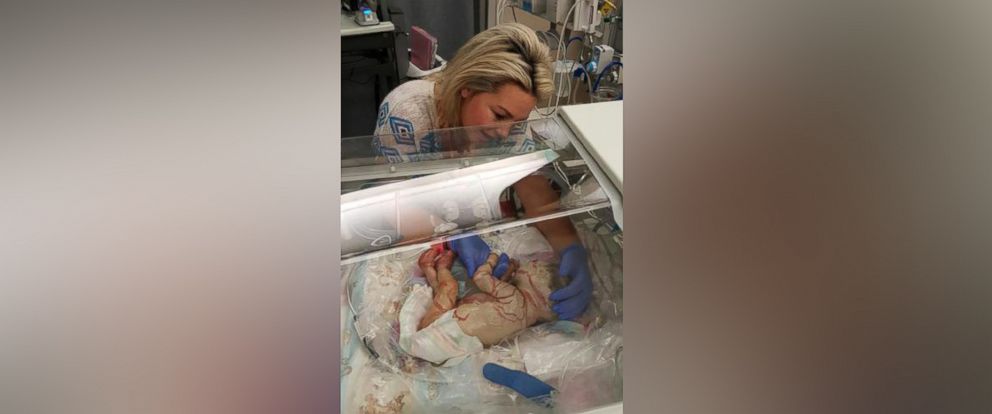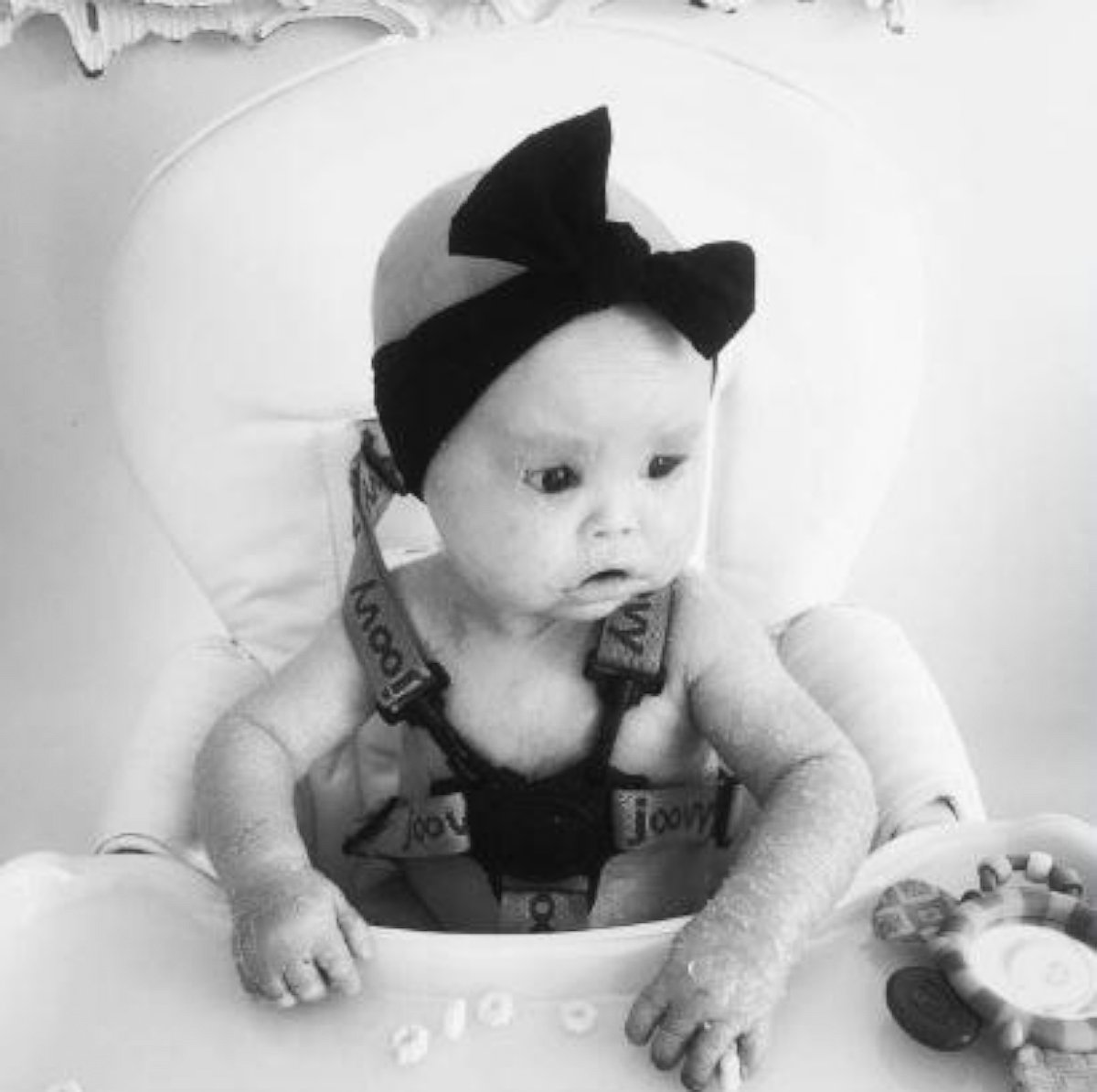Infant With Deadly Disease That Causes Scaly Skin Survives to Celebrate 1st Birthday
Harper Foy's rare condition causes her to shed her skin every two hours.

— -- When Harper Foy was born last year, doctors knew immediately that something was wrong. The newborn was covered in thick, callus-like skin that threatened to cut off blood to her extremities.
"It was like a thick skin that built up," Harper's mother, Angie Foy of Edmonds, Washington, said. "It created big thick plaques" on her body.
The cause of the disorder was a genetic disease called harlequin ichthyosis. It occurs so rarely that it's difficult to know how many people have been born with the disease.
About 1 in 300,000 babies are born worldwide with it, according to a published study, but Seattle Children's Hospital estimates it's even rarer at close to 1 in 500,000.
The mortality rate has been estimated to be as high as 50 percent, according to medical literature.
Children born with the noncontagious disease can suffer diminished breathing as the skin literally restricts their ability to breathe.
"How we describe it to people -- she reproduces new skin every two hours -- we describe it like a snake," Foy said. "Her feet and her hands are the worst and her head can get scales."

Doctors had to act quickly to reduce the thick skin Harper on newborn Harper because it was cutting off blood flow to her limbs. Doctors performed surgery on the infant and coated her in moisturizer before covering her in plastic wrap in an attempt to diminish the callused skin.
Dr. Raymond Tse, a plastic surgeon at Seattle Children’s Hospital, said doctors had to perform surgery almost immediately to save her limbs, which were being constricted by her skin.
“I had never seen a case like this in person, and I’ll probably never see one again,” Tse said in a statement released by Seattle Children's Hospital. “My first question was: Is this child going to survive? From what we learned about the condition, there’s about a 50 percent mortality rate, which usually occurs in the first few weeks of life due to infection.
“We knew if we were going to save her limbs, we were going to need to do something quickly.”

Foy and her husband visited Harper every day for the first two months in the neonatal intensive care unit. The girl seemed to face a new issue daily.
"We didn't even know if she was going to live," Foy said, explaining that the infant had three serious infections while in intensive care. "We went in there every day and brainstormed and just tried to keep her alive."
Dr. Craig Jackson, medical director of Seattle Children’s neonatal intensive care unit, said they weren't sure initially whether Harper would survive.
“When we first saw Harper, her outlook looked grim,” Jackson said in a statement from Seattle Children's Hospital. “But we didn’t give up hope. We thought she would make it, and we were willing to go the extra mile for her. The nurses who cared for her every day were key to her survival."
After two months, most of the thick callused skin had either been sloughed off or removed, and Harper could finally go home just in time in 2015 for Halloween. The family still faces challenges from Harper’s constant itchiness.
"We have to keep her hands covered " so she doesn't scratch and injure herself, Foy said. "She does it because her whole body itches and now it's become a habit; it's bad."
To help Harper cope, Foy gives her three to four baths a day to reduce the skin build-up. "She loves being in the bath," Foy said.
The family is now raising money to buy a special bath device that uses bubbles to help slough off the dead skin. But even with the extra baths, the skin literally restricts her movement, meaning developmental milestones have been delayed.
"It hurts for her to stretch out her skin," Foy said. "Even though she's a year, she's like a 6-month-old baby."
While the family was delighted to have her back home, they said, it's still sometimes difficult to take Harper out and see people's reactions when they see the infant's skin. Some children have been frightened by her condition and been afraid to touch her, Foy said.
"Not everyone knows what to say," Foy said. "She's just another human being."
Despite of the difficulty of caring for Harper, the family was able to delight in the girl's first birthday on Sept. 28. It was a huge milestone for the family, who worried day-to-day for the first months of Harper's life about her survival.
"Now I don't worry at all," Foy said. "I know she won't have a normal life [but] she'll survive and live and it'll be hard."
Despite the difficulties, Foy said, her daughter is already making a mark at home in a family with two other children, ages 6 and 17, who do not have the disease.
"She's the light of our lives," Foy said. "She's a fighter and very loud and vocal and very strong willed. ... She rules the roost."




